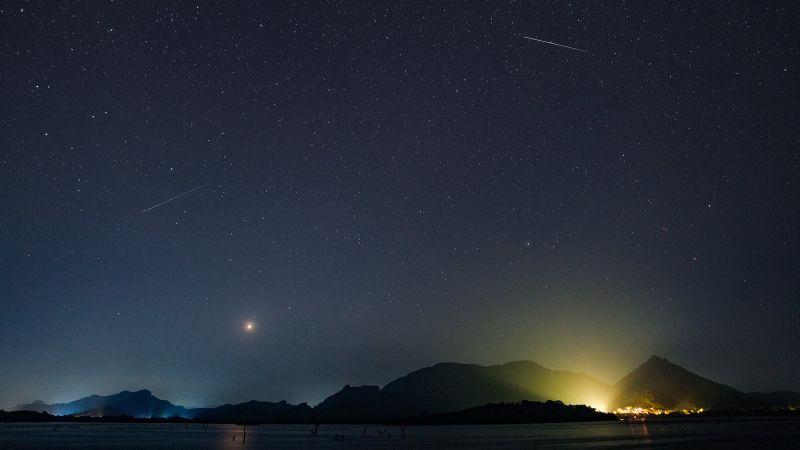The fascinating world of meteor showers captivates stargazers each year as certain celestial events unfold in the night sky. One of the most anticipated among these is the Eta Aquariid meteor shower, which recently reached its peak. Observers eager to witness this cosmic spectacle must rise early, as this meteor shower marks the last significant display until late July. Renowned for its brilliance, it is often celebrated as one of the finest annual meteor showers observable from the Southern Hemisphere, as highlighted by NASA.
The precise peak timing of the Eta Aquariid display is a subject of some debate among experts. Nevertheless, the consensus is that the optimal viewing period is during the early morning hours, just prior to dawn. Notably, meteors were reported visible on Sunday and Monday mornings, with expectations of further visibility on Tuesday morning, as confirmed by sources from EarthSky and the American Meteor Society.
On Tuesday, skywatchers enjoyed favorable conditions, as the moon was set to dip below the horizon by 3 a.m. across all time zones. This setting provided an ideal backdrop of darker skies, enhancing the overall viewing experience. According to the American Meteor Society, individuals in the Northern Hemisphere could potentially witness between 10 to 20 meteors per hour from approximately 2 a.m. to 4 a.m. Enthusiasts in the southern half of the United States and those located in the Southern Hemisphere were likely to observe even more meteors during this peak period, creating an engaging spectacle for all.
The Eta Aquariid shower is renowned for producing swift meteors that leave behind long-lasting, visually striking trails. These trails can remain visible for several seconds after the meteor has passed, although observers should not expect to see many particularly bright fireballs. The American Meteor Society noted that, despite the rapidity of the meteors, this particular shower offers a unique viewing delight for stargazers.
The parental body of the Eta Aquariid meteor shower is none other than Halley’s Comet. Each spring, from late April to early May, Earth intersects with the comet’s orbital path. This interaction results in small specks of rock and dust that have been shed by the comet entering our planet’s atmosphere, igniting a spectacular meteor display. Notably, this phenomenon also recurs in October, leading to the Orionid meteor shower. Halley’s comet, famous for its periodic appearances, last graced Earth’s skies in 1986, and it is projected to return in 2061, completing its journey along a 76-year orbit around the sun.
The meteors from the Eta Aquariid appear to radiate from the northeastern part of the Aquarius constellation, lending the shower its name. Although these meteors seem to originate from the faint star Eta Aquarii, it is important to note that this star is positioned 170 light-years from Earth. In reality, the meteors themselves burn up approximately 60 miles (or 100 kilometers) above our planet’s surface, as reported by EarthSky.
For those living in urban areas, finding a suitable viewing location away from city lights is crucial to maximizing the experience of observing the Eta Aquariid meteors. Darker skies significantly enhance the probability of witnessing an increased number of meteors streaking across the heavens. Seek an open area that offers a comprehensive view of the sky, and prepare a chair or blanket for comfortable stargazing. Crucially, allow your eyes 20 to 30 minutes to acclimate to the darkness without the distractions of electronic devices to improve your chances of spotting these ethereal phenomena.
Looking ahead, there are several other exciting meteor showers on the calendar for this year, according to the American Meteor Society and EarthSky. Among them, the Southern Delta Aquariids on July 29–30, the Perseids on August 12–13, and the Draconids on October 8–9, remain notable dates for stargazers. Each of these offers its own unique viewing experiences as the year unfolds, ensuring that the wonder of meteor showers continues to enchant and inspire.



